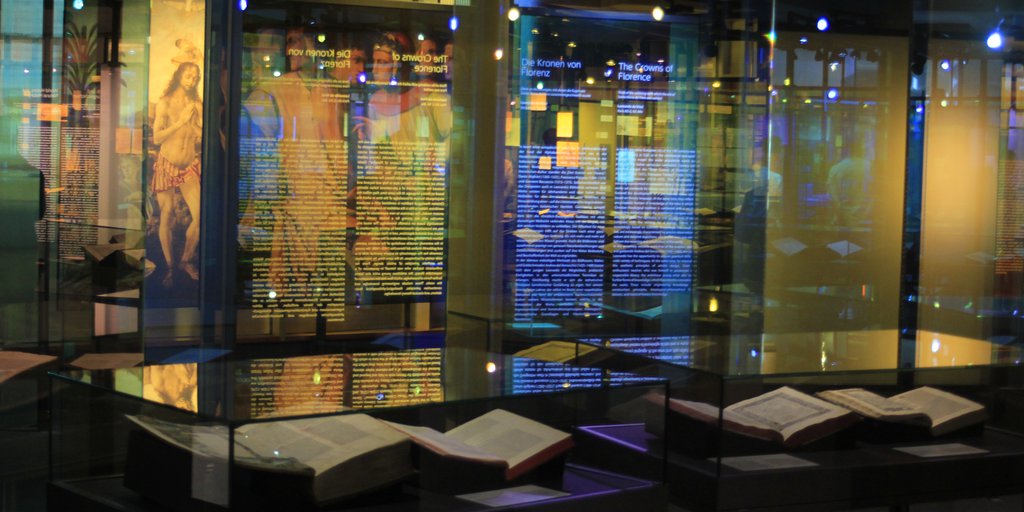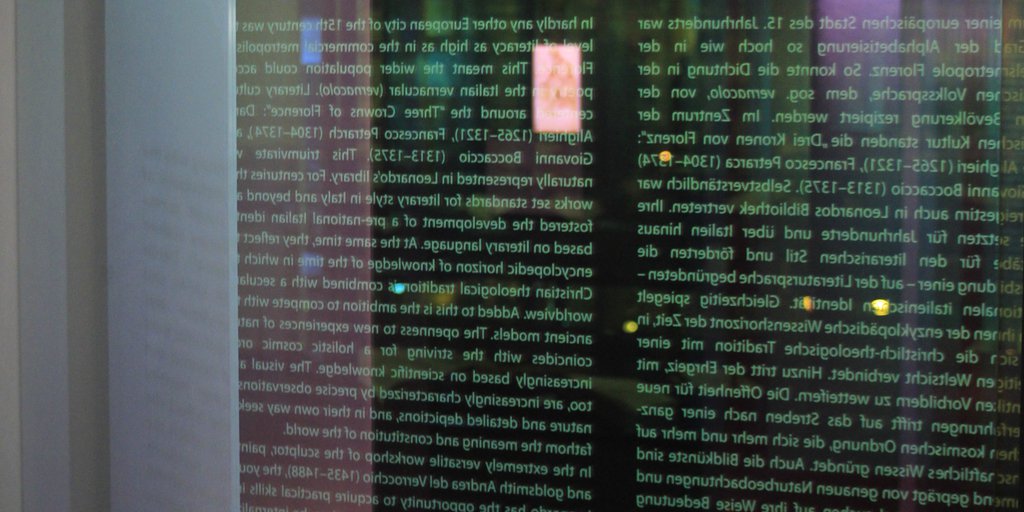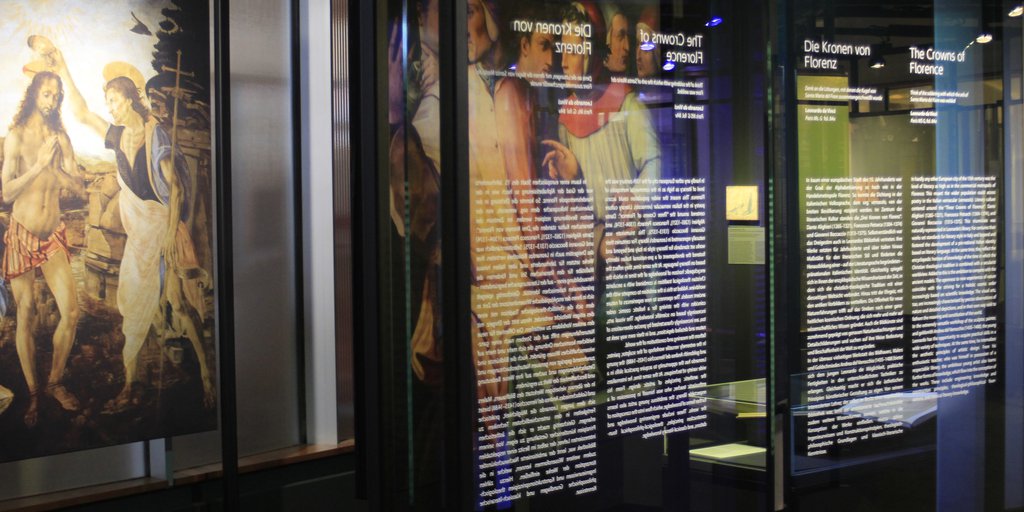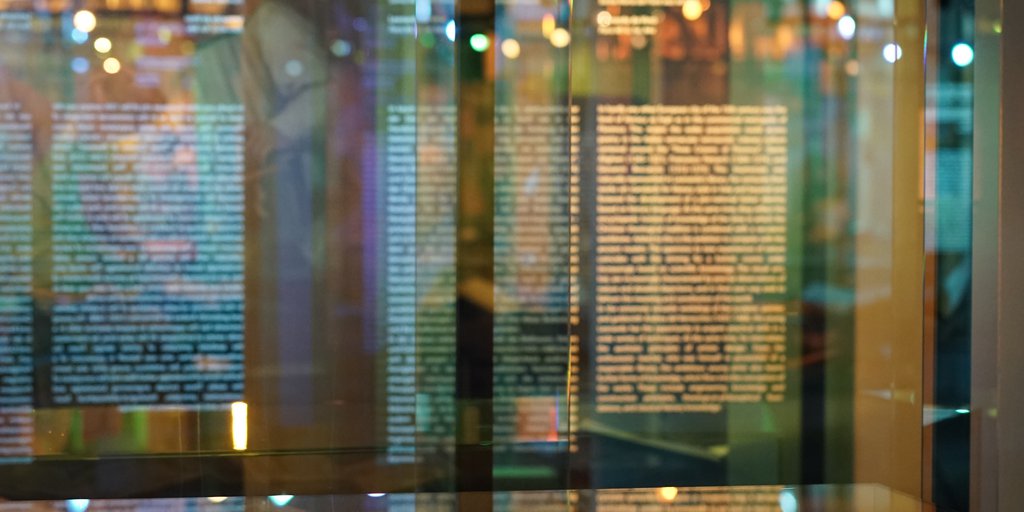
The Crowns of Florence <
Think of the soldering with which the orb of Santa Maria del Fiore was welded.
Leonardo da Vinci
Paris Ms. G, fol. 84v. Translation: Elizabeth Hughes
In hardly any other European city of the 15th century was the level of literacy as high as in the commercial metropolis of Florence. This meant the wider population could access literature in the Italian vernacular (vernacolo). Literary culture centered around the “Three Crowns of Florence”: Dante Alighieri (1265–1321), Francesco Petrarch (1304–1374), and Giovanni Boccaccio (1313–1375). This triumvirate was naturally represented in Leonardo’s library. For centuries their works set standards for literary style in Italy and beyond and fostered the development of a pre-national Italian identity based on literary language. At the same time, they reflect the encyclopedic horizon of knowledge of the time in which the Christian theological tradition is combined with a secularist worldview. Added to this is the ambition to compete with the ancient models. The openness to new experiences of nature coincides with the striving for a holistic cosmic order increasingly based on scientific knowledge. The visual arts, too, are increasingly characterized by precise observations of nature and detailed depictions, and in their own way seek to fathom the meaning and constitution of the world.
In the extremely versatile workshop of the sculptor, painter, and goldsmith Andrea del Verrocchio (1435–1488), the young Leonardo has the opportunity to acquire practical skills in a wide variety of techniques. At the same time, he internalizes the aesthetic principles of artistic design. From his enthusiastic teacher, who was himself in possession of a respectable library, the ambitious young artist also learns further forms of knowledge, which flow into the conception of the works. These include engineering knowledge and construction principles, theological-philosophical foundations, and classical literary knowledge.
Artists' Workshop <
 | 28.
Painter’s apprentice reading ca. 1450–1460 |
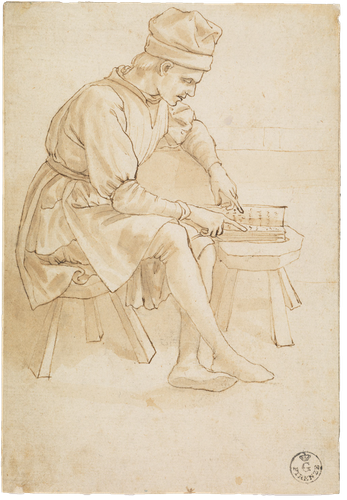
Besides practical training in drawing techniques, the workshops also offered theoretical training that included knowledge of geometry and perspective as well as the study of model collections and workshop books that were compiled in the ateliers. The sheets shown here came from these books. For the artist’s apprenticeship, Leonardo also recommends the traditional approach to drawing that he was familiar with from Verrocchio’s workshop. But at the same time, he wanted his treatise on painting (Life and Legacy D ●) to provide apprentice painters with previously inaccessible knowledge that he had gained by his observations of nature, his scientific studies, and his many years of reading.
References
Bambach, Carmen C. 2019. Leonardo da Vinci Rediscovered. Vol. 1: The Making of an Artist 1452–1500. 4 vols. New Haven / London: Yale University Press, 86–91.
Löhr, Wolf. 2007. Disegno. Der Zeichner im Bild der frühen Neuzeit. Exhibition catalogue Kupferstichkabinett der Staatlichen Museen zu Berlin, 23.11.2007–24.2.2008. Edited by Hein-Thomas Schulze Altcappenberg and Michael Thimann. Berlin / Munich: Deutscher Kunstverlag, 86–93, no. 14–18.
Melli, Lorenza. 1995. Maso Finiguerra. I disegni. Florence: Edifir, 70, no. 25.
